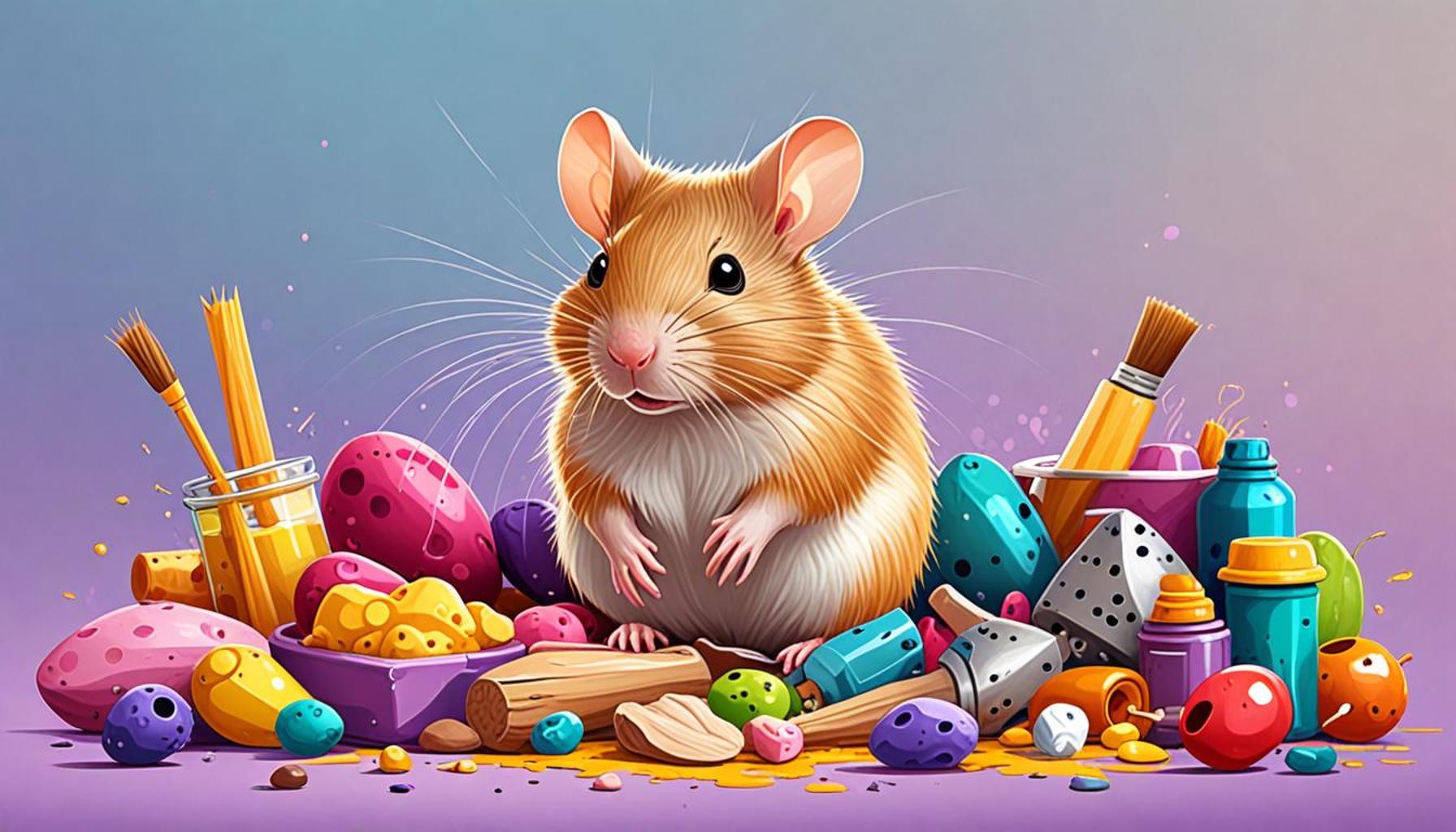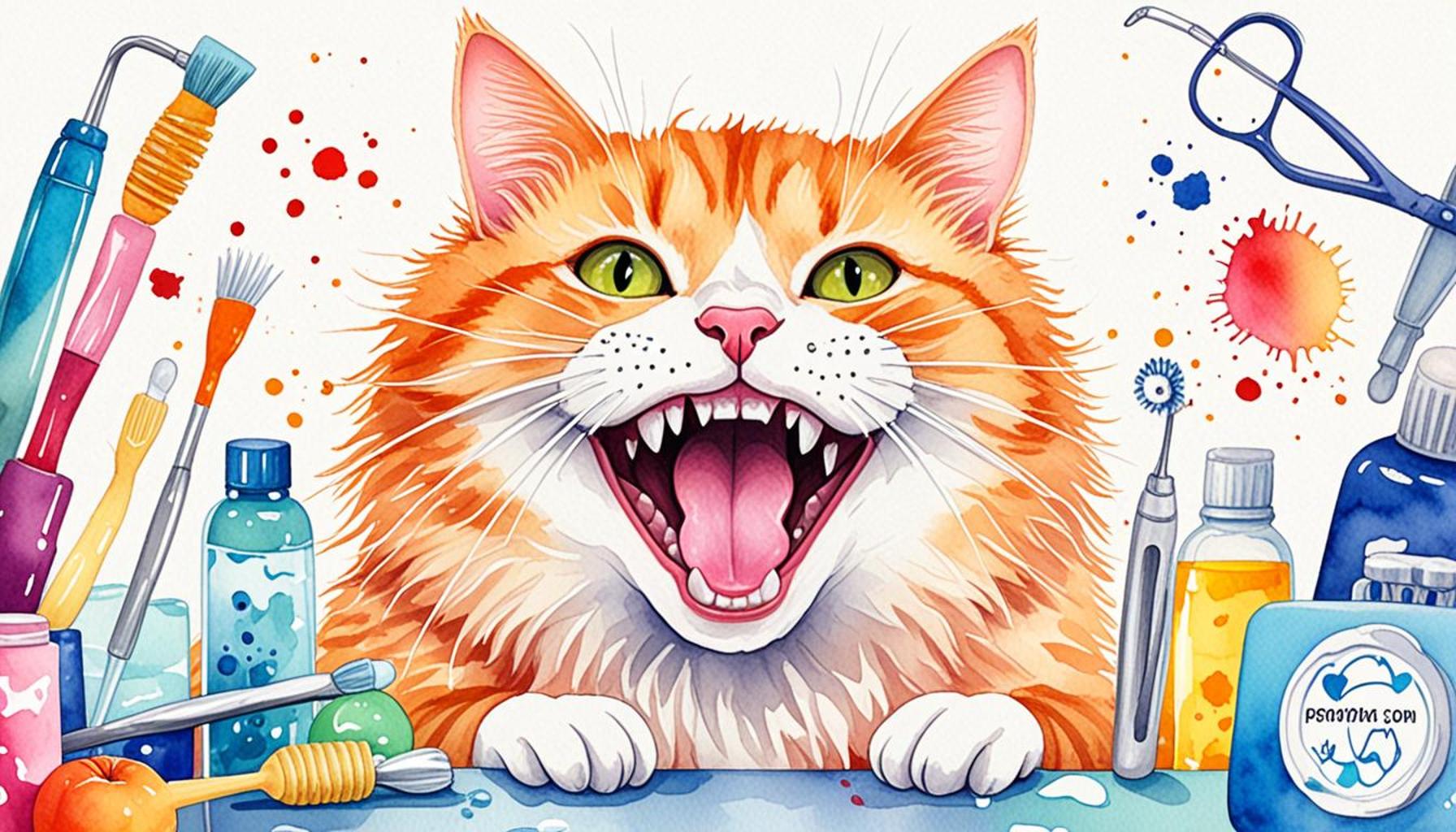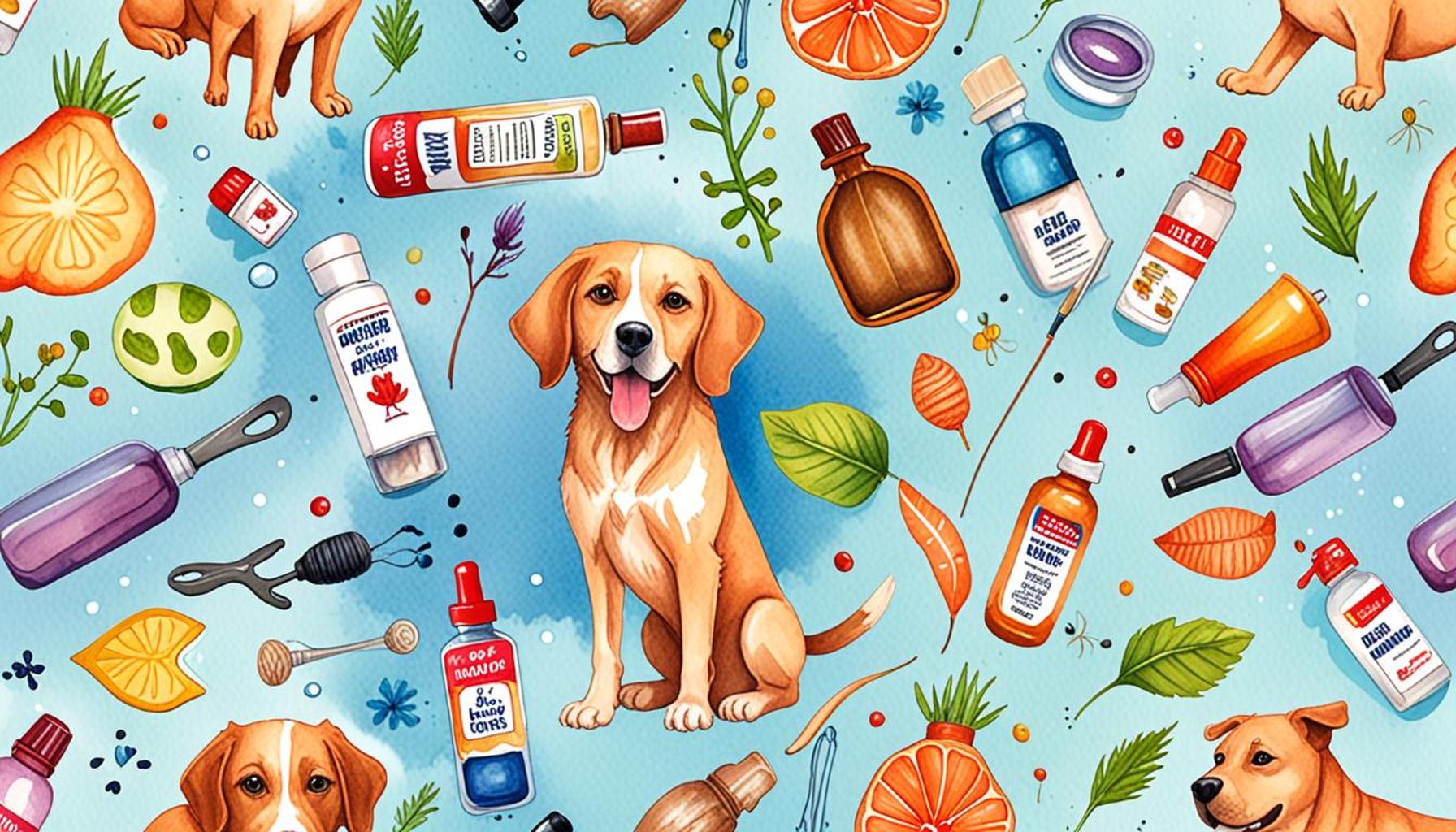Tips for Creating a Safe and Stimulating Environment for Pet Rodents

Creating the Perfect Home for Your Pet Rodents
Pet rodents, such as hamsters, gerbils, and guinea pigs, are cherished companions that bring joy and excitement to many homes. However, ensuring their well-being requires more than just food and water. A safe and stimulating environment is crucial for their health and happiness. The right setup not only enhances their quality of life but also deepens the bond between pet and owner.
One of the core components of a healthy rodent habitat is space. Depending on the type of rodent you have, the amount of required space varies. For instance, a Syrian hamster requires at least 450 square inches of living space, while a guinea pig needs a minimum of 7.5 square feet. A larger cage allows for plenty of room to explore and exercise, which is essential for preventing obesity and promoting overall health. Many owners find multi-level cages particularly beneficial, as they provide vertical space for climbing and exploration.
Another significant element is enrichment. Rodents are naturally curious and active animals. Equipping their environment with toys, tunnels, and climbing structures can provide endless entertainment. For example, items such as chew toys made from natural wood or cardboard tubes can engage their instincts to gnaw and explore. Additionally, creating a maze or incorporating a hamster wheel can cater to their need for physical activity. It’s important to rotate toys regularly to keep the environment fresh and stimulating, preventing boredom that may lead to behavioral issues.
Equally vital is the safety of your pet’s habitat. Regularly check for hazards, such as chewable wires or materials that could pose a choking risk. Using bedding made from safe, non-toxic materials is also crucial. Aspen shavings, paper-based bedding, or aspen shavings are excellent options that not only provide comfort but also encourage natural behaviors such as burrowing and nesting.
Understanding your pet’s specific needs will help tailor their environment. Rodents, being social creatures, often thrive in the company of their own kind, with species like gerbils and guinea pigs particularly benefiting from social interaction. However, some rodents, like Syrian hamsters, prefer solitude. Observing their behavior can provide insight into whether they flourish in a more interactive or private setting.
By considering these strategies and creating a thoughtfully designed sanctuary, you’re setting the stage for your pet’s well-being and longevity. Such an environment not only enriches their lives but can also bring a sense of satisfaction and joy to yours as an owner.
LEARN MORE: Click here for a complete guide on pet allergies
Crucial Elements for a Rodent-Friendly Habitat
Creating a safe and stimulating environment for pet rodents goes beyond just purchasing an appropriate cage; it requires thoughtful planning and ongoing attention. To cultivate a space where your furry friends can thrive, it’s essential to consider several critical factors that contribute to their overall well-being.
Understanding the Types of Habitat Requirements
Different species of pet rodents come with unique needs that must be met to ensure their happiness and health. Here are some specific habitat requirements based on popular rodent species:
- Hamsters: These energetic critters require ample floor space and environmental enrichment. Consider using a 450 square inch cage with multiple levels, a solid-bottom design, and no wire flooring to prevent injury.
- Guinea Pigs: Known for their social nature, guinea pigs thrive in pairs or groups. Provide a space of at least 7.5 square feet, ensuring they have enough room to live comfortably, exercise, and interact.
- Gerbils: These active little creatures benefit from a spacious habitat featuring lots of tunnels and toys for exploration. Aim for at least a 10-gallon tank that allows for burrowing and digging activities.
Alongside spatial considerations, understanding the role of temperature is equally important. Rodents are sensitive to extreme temperatures, so maintaining a stable environment between 65°F and 75°F is pivotal. Avoid placing their cages in spots with direct sunlight or drafts to help regulate their comfort.
Safety First: Preventing Hazards
In addition to providing adequate space and maintaining proper temperatures, safeguarding your pets from hazards is essential. Here are some practical safety tips for creating a secure environment for your pet rodents:
- Eliminate Small Objects: Remove any items that pose choking risks. Ensuring there are no bits of plastic, small toys, or loose bedding materials within their reach can prevent dangerous mishaps.
- Secure Wires: Rodent teeth are sharp and can easily chew through electrical cords. Protect your pets by hiding or covering any wires to shield them from potential harm.
- Avoid Toxic Foods and Plants: Be vigilant about the food items accessible to your rodents. Certain common houseplants, such as lilies and pothos, can be toxic to them. Ensure their diet consists of fresh vegetables and high-quality pellets specific to their species.
By focusing on these elements—understanding habitat needs and ensuring safety—you can cultivate an enriching and secure environment for your beloved pet rodents. Your investment in these preparations not only benefits their physical health but also enhances their emotional well-being, paving the way for a more enjoyable pet ownership experience.
| Aspect | Details |
|---|---|
| Space Management | Ensure ample living space for your pet rodents to roam and explore freely. |
| Socialization | Engage in routine interaction to enhance bonding and reduce stress. |
| Environmental Enrichment | Introduce toys and tunnels that stimulate mental activity and physical health. |
| Safe Materials | Use pet-safe materials for bedding and toys to avoid health issues. |
Creating a safe and stimulating environment for pet rodents goes beyond merely providing a cage; it entails a comprehensive approach that caters to their behavioral and physical needs. Remember that rodents are inherently curious, and their environment should mirror their natural habitat. For instance, incorporating climbing structures can vastly improve their mobility and engage their instincts. Furthermore, a regular schedule for cleaning the living space is essential, as it promotes hygiene and prevents harmful bacteria from thriving. With appropriate environmental enrichment and social interaction, you can observe a visible transformation in your pet’s mood and activity levels. As you consider these tips, each element contributes significantly to nurturing happy, healthy rodents that thrive in your care.
DISCOVER MORE: Click here to learn about effective training methods
Enhancing Mental Stimulation and Physical Activity
Beyond the basics of habitat safety and temperature control, providing mental stimulation and opportunities for physical activity is crucial for the overall health of your pet rodents. These small animals are inherently curious and need engaging environments to prevent boredom and associated behavioral problems. Here are some effective ways to keep their minds sharp and bodies active:
Providing Enrichment Activities
Enrichment activities are vital for promoting your rodents’ natural behaviors and preventing stress. Consider the following enrichment ideas:
- Toys and Chewing Materials: Invest in a variety of chew toys made from safe materials such as untreated wood, cardboard, and paper products. These items not only satisfy their gnawing instincts but also help maintain dental health.
- Foraging Opportunities: Hide small portions of their favorite treats within their bedding or scattered around their cage. This encourages natural foraging behaviors and keeps them mentally stimulated as they search for food.
- Interactive Puzzles: Provide toys that require problem-solving, like puzzle feeders and treat dispensers. These toys challenge your rodents to think critically while rewarding them with treats for their efforts.
Experimenting with different types of enrichment can help you discover what captivates your pet’s interest. Every rodent is unique, and their preferences may vary significantly.
Encouraging Physical Activity
Keeping your rodents active is integral to their well-being. Here are ways to promote physical exercise in your pet’s environment:
- Exercise Wheel: A solid-surface exercise wheel is a must-have for species like hamsters and gerbils. It allows them to run and burn off excess energy. Ensure the wheel is the appropriate size for your rodent to prevent strain on their back.
- Tunnels and Hideouts: Introduce a range of tunnels, tubes, and hideouts within their habitat. These features not only provide places to explore but also create opportunities for climbing and burrowing, essential to their natural instincts.
- Playtime Outside the Cage: Safely supervise your pet during “out-of-cage” time in a rodent-proof environment. Use exercise balls or playpens specifically designed for rodents. This gives them the freedom to explore new spaces and engage in larger movements.
Social Interaction
Rodents are often social creatures that benefit from interaction, either with their own kind or their human caregivers. Observing and interacting with them is fundamental:
- Companionship: Many rodents, like guinea pigs and rats, thrive in pairs or groups. Consider adopting multiple pets to ensure they have social partners, as this can significantly improve their happiness.
- Human Interaction: Engage with your pet daily through gentle handling, talks, or play. Familiarizing them with your presence helps build trust, making them feel secure and less stressed.
As you create a safe and stimulating environment for your pet rodents, the combination of mental enrichment, physical activity, and social interaction will significantly enhance their quality of life. These small creatures deserve a habitat that is as dynamic and engaging as they are, allowing for both physical and emotional fulfillment.
DIVE DEEPER: Click here to learn more
Conclusion: A Holistic Approach to Pet Rodent Care
Creating a safe and stimulating environment for pet rodents is essential for their overall well-being and happiness. As small yet intelligent creatures, rodents thrive in conditions that mimic their natural habitats, offering both physical challenges and mental stimulation. The combination of enrichment activities, such as chew toys and foraging opportunities, alongside facilitating physical activity through exercise wheels and tunnels, plays a pivotal role in keeping them engaged and lively.
Moreover, fostering social interaction within their environment cannot be overstated. Whether through companionship with fellow rodents or through daily interaction with their human caretakers, these connections are crucial for their emotional health. Understanding the individual preferences of your pet is key—experimenting with various toys and activities allows you to tailor their living space to their unique personalities.
Ultimately, a holistic approach that encompasses safety, environmental enrichment, physical health, and social needs will significantly enhance your pet rodents’ quality of life. Delving deeper into these aspects not only benefits your pets but also strengthens the bond you share. Take the time to create a habitat that inspires exploration and curiosity while providing comfort and security. In doing so, you will cultivate a thriving community of furry companions that contribute joy to your life while ensuring their happiness in yours.


